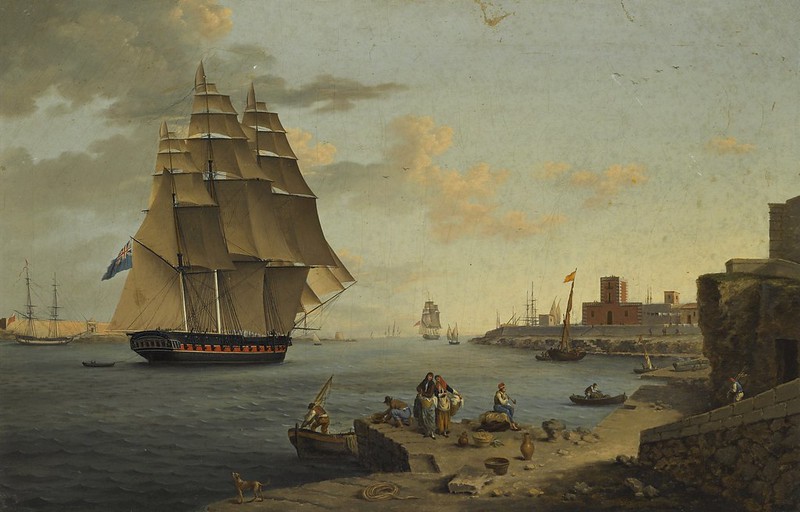Ramon Carnicer i Batlle (1789-1855)
- Sis Sonates de Menorca (c.1812)
Performers: Miquel González (orgue)
Further info: Ramon Carnicer (1789-1855) - Elena e Constantino
---
Spanish composer. He was a chorister in Seo de Urgel Cathedral from 1799
to 1806, when he moved to Barcelona, where he studied with the
cathedral maestro de capilla Francisco Queralt and organist Carlos
Baguer. Driven from Barcelona in 1808 by the French occupation, he spent
the next five years teaching the piano and singing in Mahón (Minorca)
and became closely associated with Charles Ernest Cook, who advertised
himself as a pupil of Mozart. In 1814 he returned to Barcelona, but
continued political unrest forced him to seek refuge in London late that
year. On returning to Barcelona, in 1816 he was entrusted by the Duke
of Bailén with the recruitment in Italy of an opera troupe for the
Teatro de la S Cruz. In 1818 he became director of the Liceo theatre
orchestra, and his first dramatic works, substitute cavatinas and
overtures, were written for the Barcelona premières of Paer’s Agnese (14
October 1816) and Rossini’s La Cenerentola (15 April 1818) and Il
barbiere di Siviglia (10 July 1818); these were followed by three of his
own Italian opere semiserie, Adele di Lusignano (1819), Elena e
Costantino (1821) and Don Giovanni Tenorio (1822). The première of the
first of these – timed to coincide with the arrival of Luisa Carlota,
the bride of Fernando VII’s brother – was followed by 19 further
performances in the same season. The second, no less successful, was
revived at Madrid in 1827. But the third failed, although Carnicer
considered it the best of the three. According to the Barcelona journal
El vapor (7 June 1824), it displeased because its harmonies seemed to
belong to the ‘German school’. From then on he wrote no more operas for
Barcelona, though he continued during 1823 to write inserts for other
composers’ operas, among them Pacini’s Adelaide e Comingio, Il falegname
di Livonia and La schiava di Bagdad.
In 1823-24 Carnicer conducted opera for the first time at Madrid. But in
1824 political changes forced him to emigrate again, this time with his
family briefly to Paris and then for two years to London, where he
taught and had several of his short works published. His fame caused
Mariano de Egaña, the Chilean minister in London, to commission him to
compose the music for the Chilean national anthem, Dulce patria (text by
Bernardo Vera y Pintado). Printed at London in 1828 with the cover
title Hymno patriotico de Chile and first sung at the Teatro de Arteaga,
Santiago, on 23 December 1828, the music of this hymn (with text
revised by Eusebio Lillo, 14 September 1847) is the only known Latin
American anthem by a composer who never went to the New World. On royal
order dated 24 February 1827 Carnicer moved to Madrid, where he
succeeded Mercadante as conductor of Italian opera at the Cruz and
Príncipe theatres. Among the reforms he instituted in his first year was
the replacement of those chorus singers who could not read music by
ones who could; he also increased the size of the chorus from 20 singers
to 28. To improve the orchestra he brought from Italy valve trumpet and
ophicleide players. The seven opera seasons during which he was in sole
control lasted from 1828-29 to 1844-45, with interruptions in 1830-31
(shared with Mercadante), 1833-34 to 1835-36 and 1838-39 to 1843-44. In
addition to the revival of his own Elena e Costantino (1827, Príncipe)
he conducted at Madrid the premières of his Elena e Malvina (1829),
Cristoforo Colombo (1831), one of his most important works, and Eufemio
di Messina (1832) at the Teatro del Príncipe, and Ismalia (1838) at the
Teatro de la Cruz. In 1830 he was appointed one of the 16
founder-professors of the Spanish national conservatory, which opened on
1 January 1831; he held the post until his death. His pupils included
Barbieri and Saldoni. His funeral was the most sumptuous yet given a
Spanish musician.

Cap comentari:
Publica un comentari a l'entrada